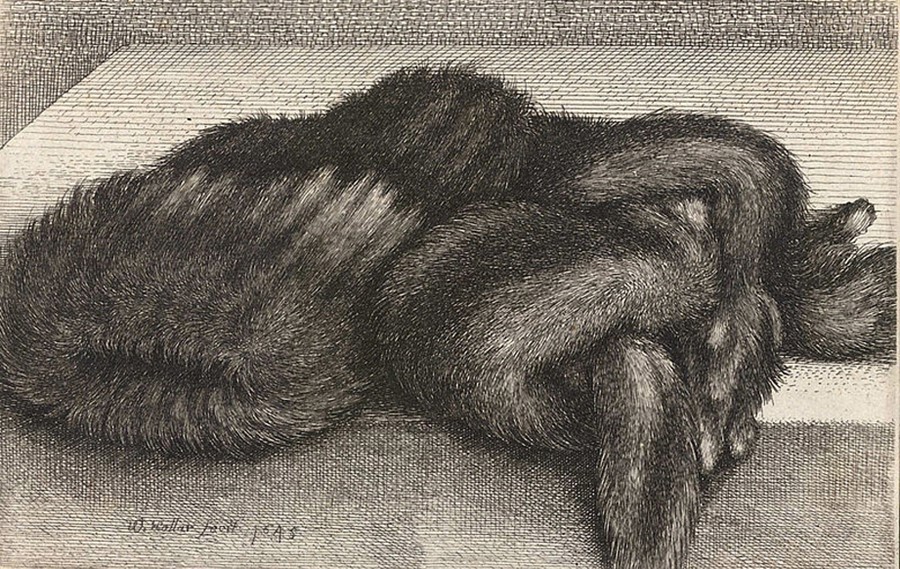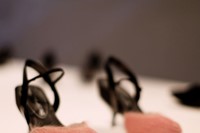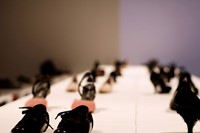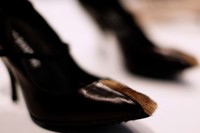In her first accessories collection for Ter et Bantine, Manuela Arcari draws on the history of fur in clothing, employing her minimalist and conceptual approach, to create a pair of open-back, pink, long-haired ponyskin sandals. “A subtle yet
In her first accessories collection for Ter et Bantine, Manuela Arcari draws on the history of fur in clothing, employing her minimalist and conceptual approach, to create a pair of open-back, pink, long-haired ponyskin sandals. “A subtle yet unremitting deconstruction of the classics,” announced the brand last weekend about the launch, “Arcari explores the material space that separates rationalism from primal instinct.”
Wearing fur derived from the primal instinct to keep warm, and soon became rationalised into sumptuous accessorising by aristocrats (and later the bourgeoisie) to separate themselves from their subjects. In 11th century Western Europe, luxury furs such as ermine and mink were reserved for the sole use of the upper classes, making it illegal for members of the lower classes to wear them. Cost also automatically excluded them.
"Wearing fur derived from the primal instinct to keep warm, and soon became rationalised into sumptuous accessorising by aristocrats (and later the bourgeoisie) to separate themselves from their subjects."
In more recent times the sexual symbolism of fur has been used for counter-cultural purposes. Most famously perhaps in Meret Oppenheim’s 1936 Object – a cup, spoon and saucer lined in fur and so playfully transformed from genteel feminine domestic aide to female genitalia. Although the symbolism was also not lost on Wenceslaus Hollar three centuries earlier in his achingly detailed etchings of fur muffs and stoles which depict every hair with singular attention.
Following Oppenheim, fellow Surrealist Elsa Schiaparelli designed a pair of monkey fur shoes with the fur worn long to resemble hair. This aesthetic has been echoed in boots by Rick Owens and Azzedine Alaia as well as in the A/W10 collections by Chanel and Yves Saint Laurent. At Ter et Bantine, the ponyskin is also long, shaped on the shoe to an elongated, rounded point, with “the ankle straps anchoring sturdy objects to the feet” to transform the foot into an elegant paw.
Text by Agata Belcen and Research by Daisy Woodward



